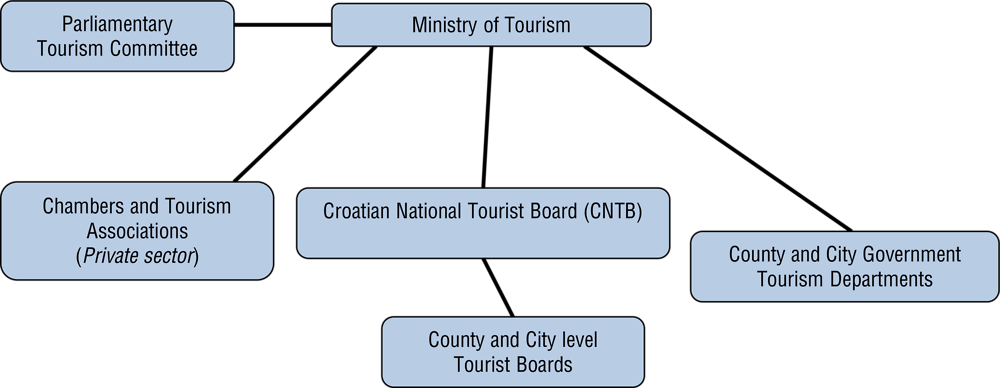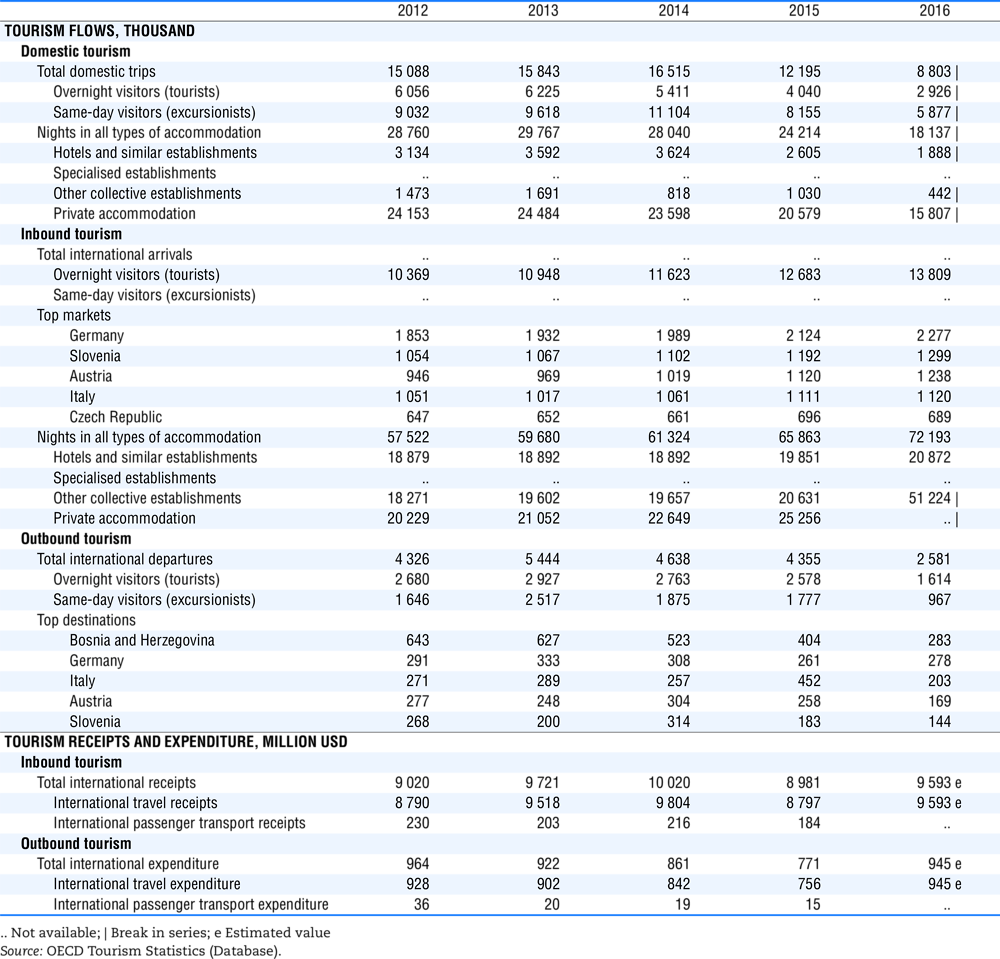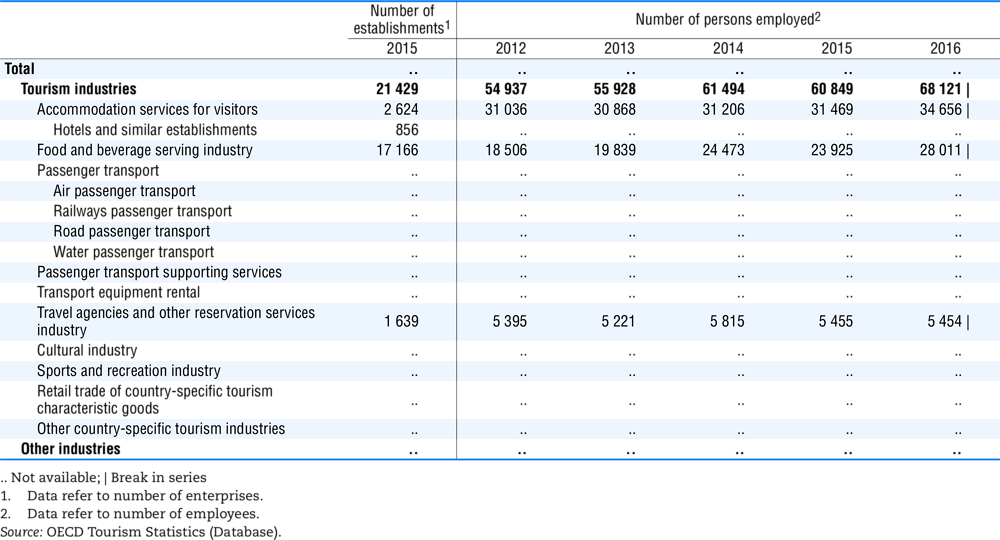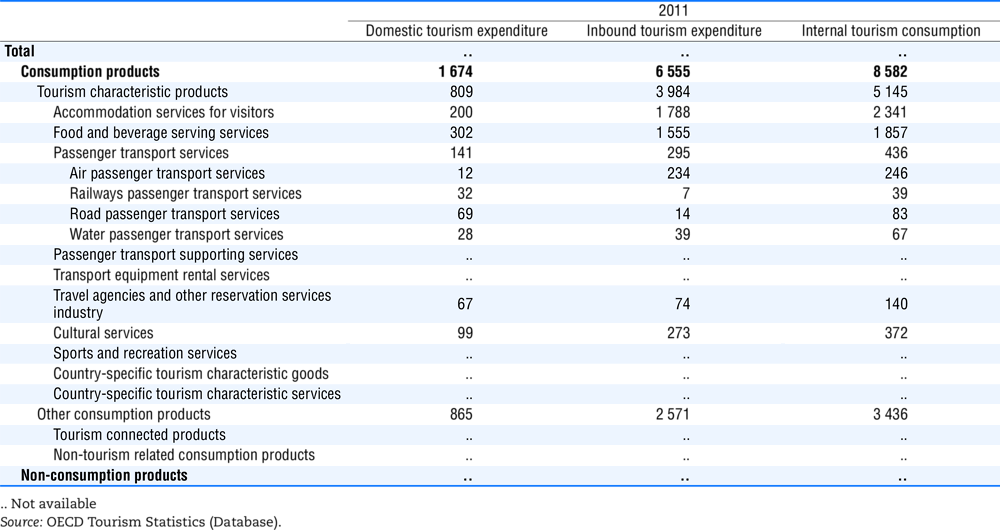Croatia
Tourism in the economy
In 2016, tourism’s share of Croatian GDP was 18.9% (indirect impact included) and tourism revenue amounted to EUR 8.6 million, up 4.4% on 2015. Aggregate growth in GDP was 2.9% in 2016, up from 1.6% in 2015, with trade, transport and tourism services contributing most significantly to this increase. Similarly, the growth in tourism services exports was a key factor in the overall growth in the export of services of 6.7% in 2016.
International tourists were responsible for 92.5% of tourist nights, up 9.6% on 2015, while domestic tourist nights increased by 2.0%. The increase in the total number of international arrivals primarily reflects growth in European markets, especially Germany, Austria and Slovenia. The US and China are the largest non-European markets. Commercial accommodation was responsible for 52.2% of overnights, and grew by 9% compared with 2015.
Growth in demand for the pre- and post-season period is higher than for the two months of the high season, although the latter still accounts for over 60% of annual tourist overnights.
Growth of 6-8% in tourist arrivals and overnights is expected in 2017, with no change in the relative contribution of leading source markets. In 2018, growth in both arrivals and overnights is expected to exceed the projected average growth for Europe (3.4%), and for the Mediterranean zone (4.9%).
Tourism governance and funding
The national body responsible for tourism is the Ministry of Tourism, which is in charge of drafting strategies, policies and measures at national level and drawing up proposals for legislation to regulate the tourism and hospitality industry, determining the role and activities of the Croatian National Tourism Board, and tourism tax issues.
There are four Directorates within the Ministry: International Co-operation, Development and Competitiveness of Tourism, the Tourist Board System and Destination Management, and Legal Affairs. The Ministry regularly co-operates with hotel, travel agent and other industry associations as well as with non-governmental organisations and trade unions.
Tourism promotion is the responsibility of the Croatian National Tourism Board (CNTB). The Minister of Tourism is, ex officio, its President, while the Executive Director manages the CNTB’s daily operations and activities.
At the regional level, most county administrative offices have a department responsible for tourism and handle the classification of, and issuing of permits for, private accommodation operators.
In 2016, the overall State Budget was approximately HRK 142 billion, of which HRK 172 million was allocated to the Ministry of Tourism. The total budget of the Croatian National Tourist Board from all sources was HRK 259 million, a decrease of 2% on 2015.

Source: OECD, adapted from the Ministry of Tourism, 2018.
Tourism policies and programmes
The main aim of the Croatian Tourism Development Strategy is to increase the attractiveness and competitiveness of tourism by 2020. Key challenges identified by the Ministry of Tourism in their strategic plans for 2016-2018 include:
-
Improving tourism quality and product content, by developing new and improved products and services through innovation, specialisation and sustainability,
-
Asserting Croatia’s place in international tourism markets through use of effective promotion, with the goal of strengthening the Croatian tourism brand, raising off-peak turnover and average spend, and strengthening support for the tourism industry.
The following are examples of actions to address these challenges:
-
Adapting Ministry activity in support of the Strategy,
-
Re-aligning the CNTB’s Operational Marketing Plan,
-
Establishing an inter-ministerial Council,
-
Securing EU funding for tourism sector development,
-
Implementing the necessary legal changes,
-
Privatising remaining state-owned tourism properties,
-
Developing new products for new tourism segments,
-
Ensuring favourable conditions for tourism investment,
-
Offering incentives for “greenfield” investments.
Since 2013, diversification of the tourism offer has been pursued through developing actions plans and national programmes for specific sectors of the tourism industry, some with a dedicated steering committee to oversee implementation. Examples include support for organisation of cultural, gastronomic and sport events, tourist attractions, thematic parks, cycling routes, beach management and improvements to family accommodation.
In 2016, CNTB gave financial support to tourist boards in less developed areas on the mainland for practical actions to develop and improve the destination offer, education of new or specialising service providers, and development, renovation and improvement of public tourism infrastructure.
The Ministry of Tourism co-financed vocational courses with a focus on tourism priorities, including strengthening competitiveness, new types of promotion and improving destination management.
The Croatian National Tourist Board has launched a project designed to increase Croatia’s competitiveness in the pre- and post-season (PPS) period. A “PPS destination” label will extend the tourist season by rewarding destinations which develop an attractive and competitive offer with added value in the PPS period.
The Ministry of Tourism has given financial support to SME development through an increase in the quality and diversification of the tourism offer, and to sustainable growth through the use of new technologies and social inclusiveness, the development of special interest tourism, and greater international recognition. Grants have been aimed at small businesses, rural homesteads and private renters. A grant allocation for construction of new swimming pools is designed to support the competitiveness of the tourism sector.
A Tourism Development Fund, derived from concessions and sale of land, supports local and regional entities, including national or nature parks, in developing public infrastructure and resource conservation. In 2016, a call for proposals led to finance for beaches, visitor and interpretation centres, and public infrastructure for cycle tourism.
Another call for proposals from the Ministry of Tourism has been designed to respond to the social needs of vulnerable groups with the aim of improving access to employment in the tourism and hospitality sector which will be financed by European Social Fund.
In order to support the sustainable development of tourism, the Croatian Sustainable Tourism Observatory (CROSTO) has been established, in co-operation with the World Tourism Organization, applying the European Tourism Indicator System (ETIS) developed by the European Commission to monitor and measure tourism sustainability in Croatia. The project was launched in 2017, with first results available by the end of the calendar year.
In 2016, the Croatian National Tourist Board (CNTB) established eVisitor, a national online information system/platform for tourism. eVisitor provides a central platform for tourism data management. A comprehensive database of over 160 000 accommodation providers enables online check-in and check-out by all providers, as well as tourist offices (national/regional/local) across Croatia. Today, eVisitor is used by all tourist boards (over 300), all registered accommodation providers, and the Croatian National Tourist Board and its representative offices in 16 countries abroad. In addition, it is utilised by the Ministry of Tourism, the Ministry of Administration, and the Ministry of the Interior, Customs Administration and Inspection Services, the Central Bureau of Statistics, and other stakeholders involved in shaping, improving, and monitoring the tourism sector (Box 1.14).



